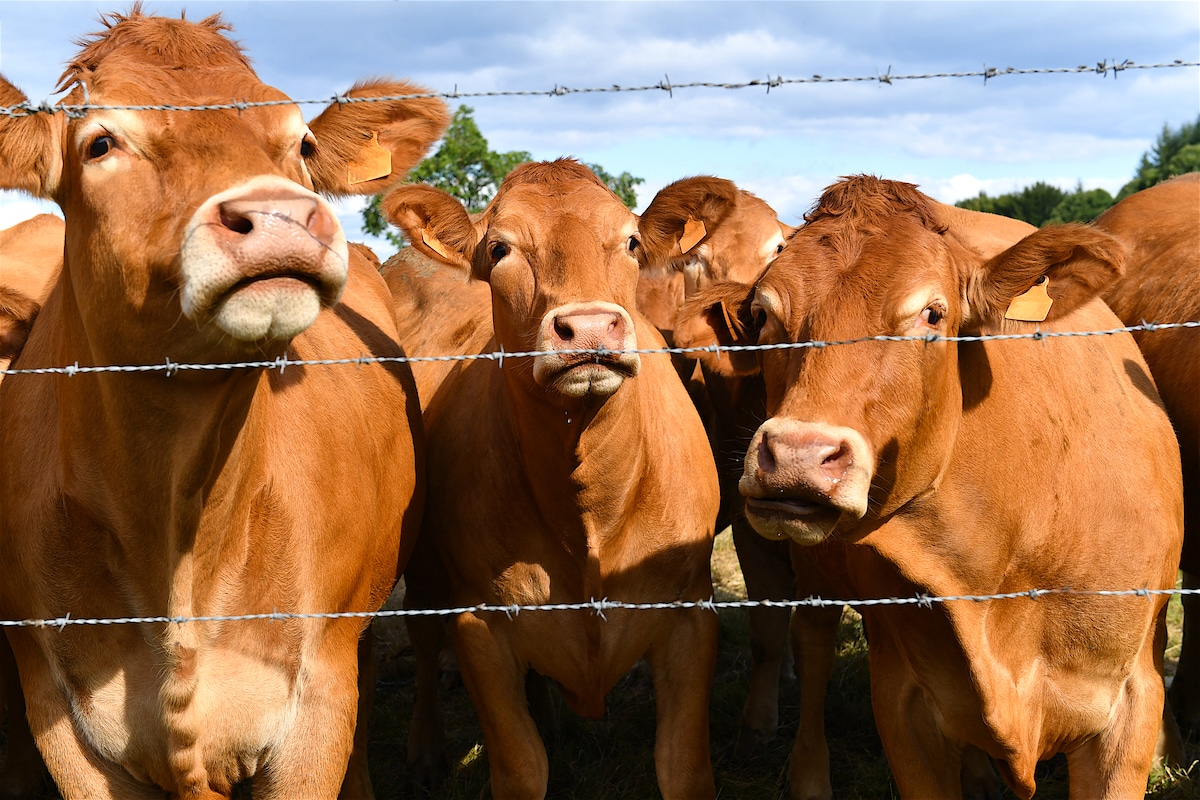Ecowatch
More Than 80% of EU’s Agricultural Subsidies Goes to Animal Farming That Is ‘Driving Us to the Brink’

A herd of cows raised for beef in the Limousin region of Central France on July 26, 2022. Olivier DJIANN / iStock / Getty Images Plus

Why you can trust us
Founded in 2005 as an Ohio-based environmental newspaper, EcoWatch is a digital platform dedicated to publishing quality, science-based content on environmental issues, causes, and solutions.
The European Union has been investing four times the amount of money into animal agriculture — which makes “artificially cheap” diets that heavily pollute the planet — than it has into plant-based farming, according to a new study.
The European Union spends almost one-third of its budget on subsidizing its common agricultural policy (CAP), reported The Guardian.
More than 80 percent of CAP funds given to farmers in 2013 went to animal products, the study said.
“The vast majority of that is going towards products which are driving us to the brink,” said Paul Behrens, study co-author and researcher of environmental change at Leiden University, as The Guardian reported.
Since large amounts of land are required to grow feed, and CAP is based mostly on land use, the subsidy program “results in perverse outcomes for a food transition,” the study explained.
“Although the CAP does not designate animal-based commodities as desirable, by disproportionally supporting livestock farming, especially when accounting for animal feed subsidies, the CAP presents an economic disincentive for transitions towards more sustainable plant-based foods,” the study said.
In order to produce equal amounts of protein, beef products need 35 times more land than grains and 20 times more than nuts.
“The global food system is responsible for approximately one-third of greenhouse gas emissions, occupies half of global habitable land and accounts for more than four-fifths of all water consumption. Current global food emissions alone will probably preclude the 1.5 °C Paris Agreement target,” the study said. “The food system is also vulnerable to the impacts of environmental and climate change, which include increasing temperatures and shifting precipitation patterns. More frequent and severe extreme weather events are already affecting food security, and additional European Union funds are already supporting farmers experiencing climate damages.”
The study, “Over 80% of the European Union’s Common Agricultural Policy supports emissions-intensive animal products,” was published in the journal Nature Food.
To determine just how much the EU invests in animal products, the research team looked at subsidy records and the supply chain’s flow of public money.
“The study illustrates that most subsidies do not support an urgently needed transition towards healthy and sustainable diets,” said Florian Freund, a Braunschweig University agricultural economist who was not part of the research team, as reported by The Guardian.
Animal farming contributes from 12 to 20 percent of greenhouse gas emissions and is one of the biggest causes of decreasing wildlife numbers globally.
In its most recent CAP reform — 2023 to 2027 — the EU designated 25 percent of direct CAP payments to “eco-schemes” that incentivize environmentally friendly farming.
“CAP payments represent the largest expense (∼30%) of the total EU budget. However, the CAP lacks long-term strategic planning for transforming agricultural systems and reducing emissions. This is concerning in the face of global environmental targets required to keep within the 1.5 °C target, which requires net-zero emissions, eliminating reliance on fossil fuels and substantially reducing livestock farming within 20 years,” the study said.
Subscribe to get exclusive updates in our daily newsletter!
By signing up, you agree to the Terms of Use and Privacy Policy & to receive electronic communications from EcoWatch Media Group, which may include marketing promotions, advertisements and sponsored content.
Source
Disclaimer: No copyright infringement intended. All rights and credits reserved to respective owner(s).










